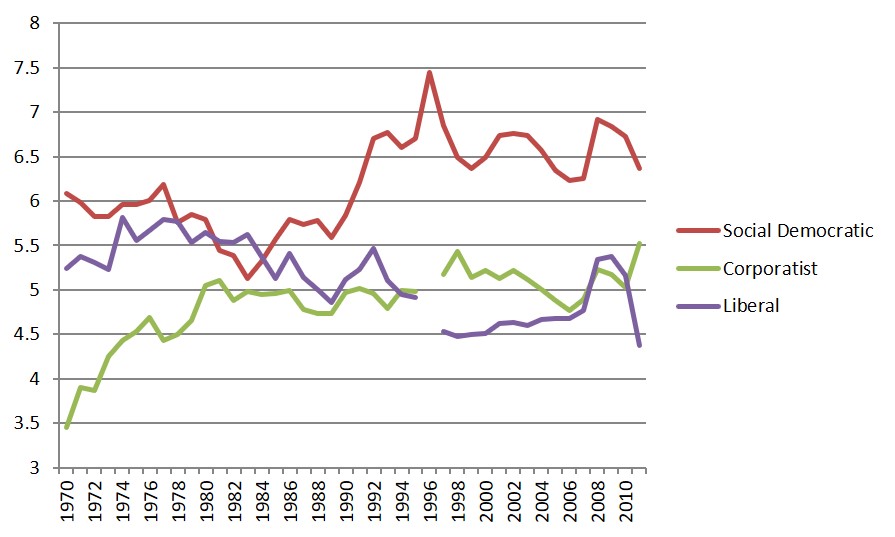Lecture 10.2
U.S. Exceptionalism
The Effects of Globalization
Three Theories
- Race to the bottom hypothesis
- Globalization induces states to drastically reduce publicly provided benefits and services
- Embedded liberalism hypothesis
- Globalization induces states to spend more on benefits and services to cushion workers from increased labor market risks
- Convergence
- Globalization forces states to provide similar levels and types of benefits and services
Education Spending in Three Worlds

Notes: Data are from World Bank Development Indicators. Social democratic countries include Denmark, Finland, Netherlands, Norway, and Sweden; Corporatist countries include Austria, France, Germany and Italy; Liberal countries include Australia, Canada, Ireland, Japan, New Zealand, the UK, and the U.S.
Health Spending in Three Worlds

Notes: Data are from the World Bank Development Indicators. Social democratic countries include Denmark, Finland, Netherlands, Norway, and Sweden; Corporatist countries include Austria, France, Germany and Italy; Liberal countreis include Australia, Canada, Ireland, Japan, New Zealand, the UK, and the U.S.
Reasons for Persistence
- Trade openness—induces countries to spend more to cushion workers (embedded liberalism)
- Partisan politics—Christian democratic and social Democratic parties favor welfare state (but different kinds)
- Electoral politics (voters like programs)
- Bureaucratic inertia (vested interests)
- Economic coordination (next week)
Effects of Some Int’l and Domestic Factors

Source: Swank, “Globalization, the Welfare State and Inequality”
How Do We Get to Denmark?
Barriers to a European Welfare State in U.S. (Alesina et. al.)
Electoral systems
Federalism
Courts
Ethnic diversity
What is the strongest factor? Missing factors?
Should We Go to Denmark?
What is your vision of the “American Dream”?
Can “democratic socialism” work in the United States?
- Is it the American dream “for real”?
- Is it affordable?
